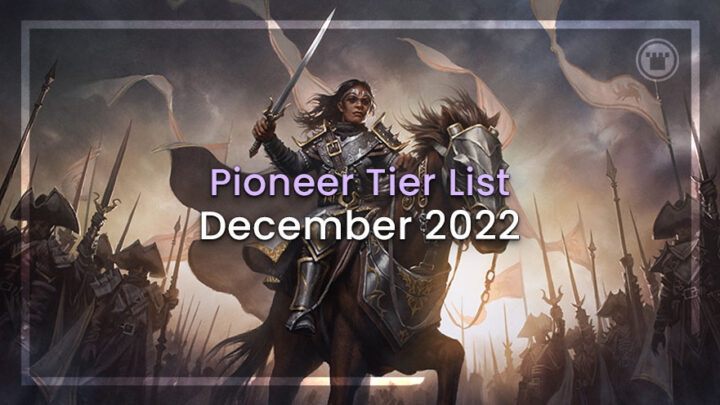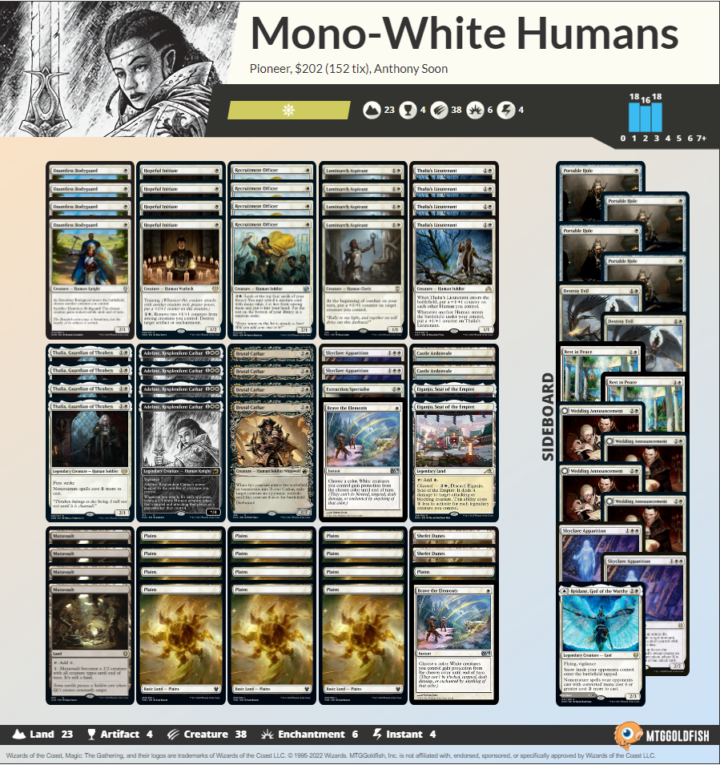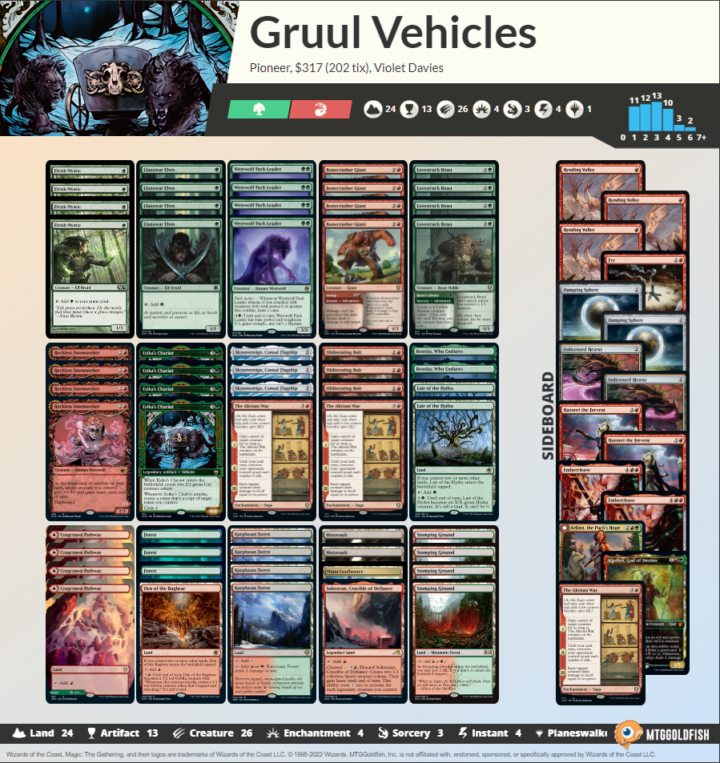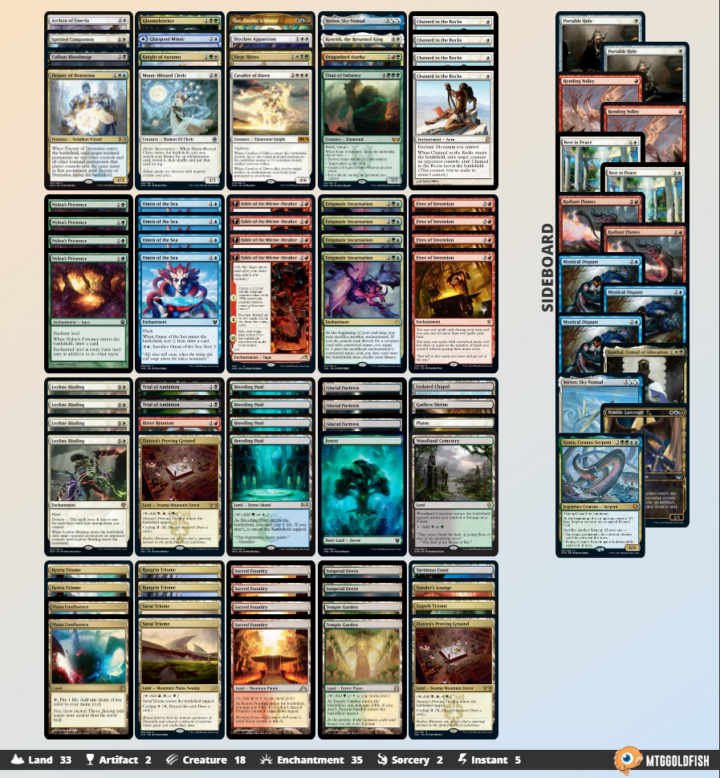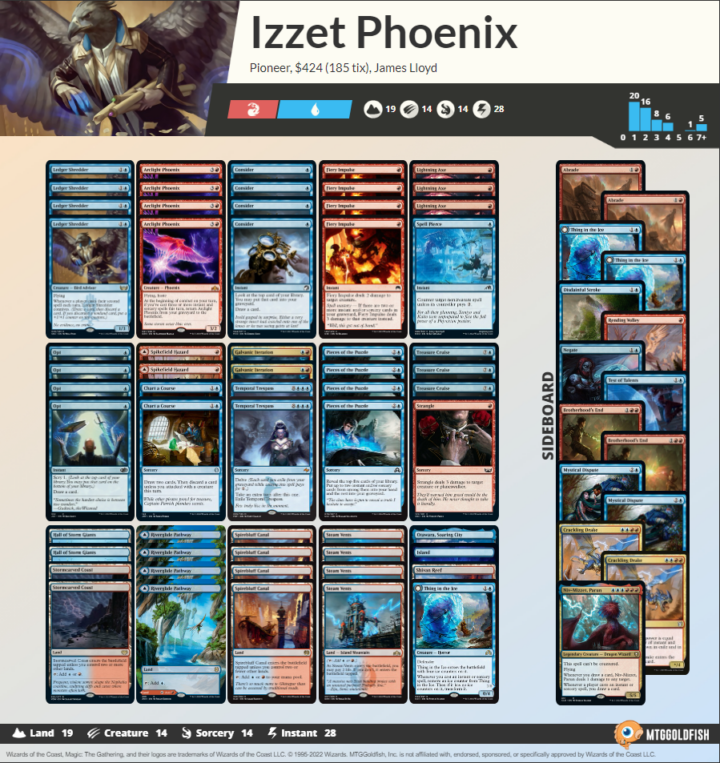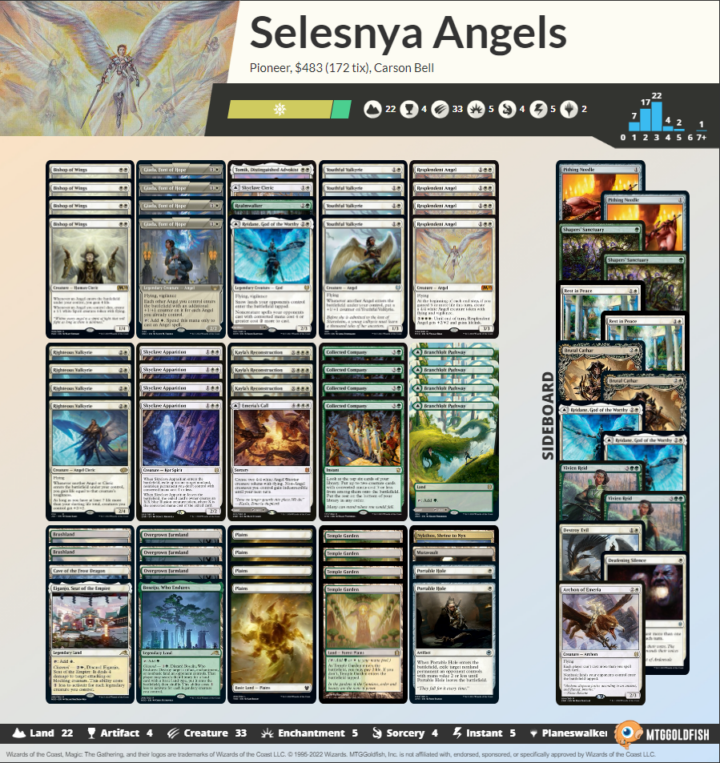Despite a Standard focused San Diego Regional Championship on the horizon, we’re back to Pioneer Regional Championship Qualifier season again! With eyes turning back to this format, we made a tier list of all the top decks to see where things have shaken out post Dreamhack Atlanta. That way, when the season starts on Jan. 7, you’re ready to lock up that invite.
But before we dive into the list, I want to lay out my grading criteria to help contextualize my recommendations:
S-Tier: Decks that are above the rest. This is normally the default “best deck in the format” and the deck(s) you should have in mind when building or picking your deck.
A-Tier: Decks that are great. These decks are knocking on the door of S Tier, but they may have a small weakness that keeps them out of the upper echelon.
B-Tier: Good, solid decks. You wouldn’t be surprised if a B Tier deck takes down an event, but they have bigger weaknesses or liabilities than the decks in A Tier.
C-Tier: Decks that are totally fine, but not notable. These decks aren’t exactly tearing up the tournament or ladder scene, but you should expect to face them every now and then.
D-Tier: Decks with strong elements, but that generally aren’t great choices compared to the rest of the format.
S tier: Rakdos, Mono Green and Mono White
I am just going to quickly cover both Rakdos and Mono Green since there is so much content out there about these decks that it would be a disservice to spend more time on them. These decks have, at worst, been solid choices basically every week since RCQ Season 1 began.
They are still a cut above the rest, for the most part, though they are not gaining much as new sets drop. While Misery’s Shadow was a big get for Rakdos and Green got some new sideboard Wish options, they are all small upgrades compared to what the other decks have acquired.
Mono White Humans has climbed the most tiers during the past nine months thanks to some solid upgrades and sideboard plan developments. Yet ultimately, this deck is still very similar to how it looked before the last Pioneer season. So, why is it suddenly so good?
Well, players got better at piloting the deck, for starters. Sometimes it just takes time to really get a good handle on a deck at a large scale. The metagame also moved around it a good bit at the other tiers.
While Rakdos and Mono Green have stayed at the top, the rest of the decks in the format have moved, adapted and changed. This resulted in this deck moving up the list, as it has a good swath of strong matchups that drove an increase in popularity.
The Humans deck is proactive, powerful and great at punishing when an opponent stumbles. That’s something most every deck in Pioneer does to some degree, but the secret to Humans is its claim to the lowest fail rate of any deck. Its game plan is simple and consistent, and that’s a positive point here.
A Tier: Gruul Vehicles, Enigmatic Incarnation
The Gruul Vehicles deck popped up right before the first round of Regional Championships. The deck did fine in those events, but it didn’t put up amazing results across the board. Since then, however, players have fixed a lot of the deck’s problems. Now it deserves a spot as a top tier deck.
The first and biggest change involved improving the mana. Many players ran four Mutavaults when first playing this deck. And while that is a very strong card with great performances across Magic’s history, the colorless mana the land produced proved too restrictive for Gruul’s needs. Since then, players dropped the number of Mutavaults to cast their spells on time more consistently.
Including Werewolf Pack Leader was the deck’s other big change. While this card removes the ability to use Jegantha as a companion, it also shifted focus a bit away from three drops to two cost cards. As a result, not only can players double spell a bit more often on turn three, but there are more functional draws when opponents kill your turn one mana dork.
Packleader is more than a mana curve filler, though, as it’s also a great tool for refueling your hand once depleted. This extra form of card advantage has done wonders for the deck.
The last change that helped Gruul was including Arlinn, the Pack’s Hope in the sideboard. She allows this deck to have a bit more grind potential and play through interaction against creatures even more then before.
Gruul is often fine against spot removal, but big sweepers can sometimes cause problems. Arlinn helps fix this in a myriad of ways. From the plus giving your creatures Flash to simply making two tokens or coming down as a huge 5/5 with Haste if it’s Night, there’s a lot to love about this Planeswalker.
Enigmatic Incarnation is another deck that popped up pre-RC 1, but it took some time to perfect the list. It’s a four to five color deck that can play anything in the format and can, in theory, adjust to everything going on around it.
The deck is also incredibly hard to play at a high proficiency since it must adapt to the metagame around it by shifting its plans. This sticking point is shared with Rakdos Midrange, but this list is less aggressive and much more controlling.
While this deck cannot pressure as easily or consistently as Rakdos, that’s not inherently a super negative quality — just something to keep in mind. The customization and flex slots in this deck are near limitless, and its raw power can’t be underestimated.
At the current moment in Pioneer, this deck is in a fine place, though I expect it to back slide every time a new set drops. I will also expect it to regain traction as said new sets settle in. Either way, it’s the perfect deck to pilot if you like tweaking and fiddling with lists.
B tier: Phoenix, Grease Fang, UW Control, Spirits
We won’t get into all the decks here to save time, but I did want to talk about the closest deck I have to a comfort pick in Pioneer at the moment: Phoenix.
I have ended up playing this deck often, with many different iterations. It also helped me qualify for the upcoming Pro Tour. However it’s a hard time to play Phoenix.
Your Mono White matchup isn’t that good when you’re low on Thing in the Ice in the list, it’s hard to answer lots of creatures with Thalia to back them up. Meanwhile, cards like Adeline, Resplendent Cathar dodge a good bit of removal, only easily dying to Lightning Axe.
Against Rakdos, you’re in a terrible place post board if they have Go Blank — and cards like Graveyard Trespasser are always a huge issue. That’s before we even get to decks like Enigmatic Incarnation, which can choose to hard target your game plan with cards like Rest in Peace.
Yet, despite everything I just explained, Phoenix can overcome and often get the job done anyway (just not to the extent that Rakdos Midrange can). This true statement combined with the fact that Phoenix often beats up on weaker, technical players leads many to keep piloting the deck.
Phoenix has a lot of power behind it, so it’s hard for it to ever be one of the worst decks in the room. Right now it’s just hitting a low point.
C Tier: Angels, Keruga Fires, Lotus Field, 8 PZ and U Spirits
Selesnya Angels was the new hotness just a month ago. And while the deck is pretty good against Mono Green, it’s maybe not as favorable a matchup as players hoped (the addition of The Mightstone and Weakstone made it easier to remove the deck’s angels).
The meta also gained Enigmatic Incantation and Gruul in a much larger way. While Gruul isn’t the worst matchup, it does have strong draws thanks to cards like The Akroan War. Meanwhile, Enigmatic Incarnation also typically beats up on creature decks.
Still, Kayla’s Reconstruction was a huge get for this deck from The Brothers’ War. It allows angels to effectively have more copies of Collected Company. And while this new card is often weaker than CoCo in the early turns of the game, Reconstruction really powers up as the game drags on. Another small upside is it can also grab your main deck Portable Holes to increase your chances of finding removal (and to minimize running non-creatures in a CoCo deck).
Yet even with this powerful addition, the angels deck just has an overall rough time with the top tiers of the Pioneer metagame. It can dominate some ground based creature decks, but it has too many weaknesses to be a serious contender.
End Step
That’s going to do it for the tier list this go around. Pioneer’s top tiers haven’t changed much, but the middle of the pack is always shifting. That’s why it’s important to remember that any deck from B tier up can easily win an event. Don’t hyper focus on only the top tier decks or you’ll get blown out by the other threats.
Otherwise, I hope this list helps refamiliarize you with the Pioneer landscape at the moment. We’ll be sure to keep you up to date with new developments as the season progresses, so be sure to follow me on Twitter, too.

Mason Clark is a grinder in every corner of the game who has played at the pro level and on the SCG Tour with Team Nova. Whether he’s competing in Standard, Historic or Modern, Mason plays with one goal in mind: to be a better player than he was the day before. Check out his podcast, Constructed Criticism, and catch his streams on Twitch.

